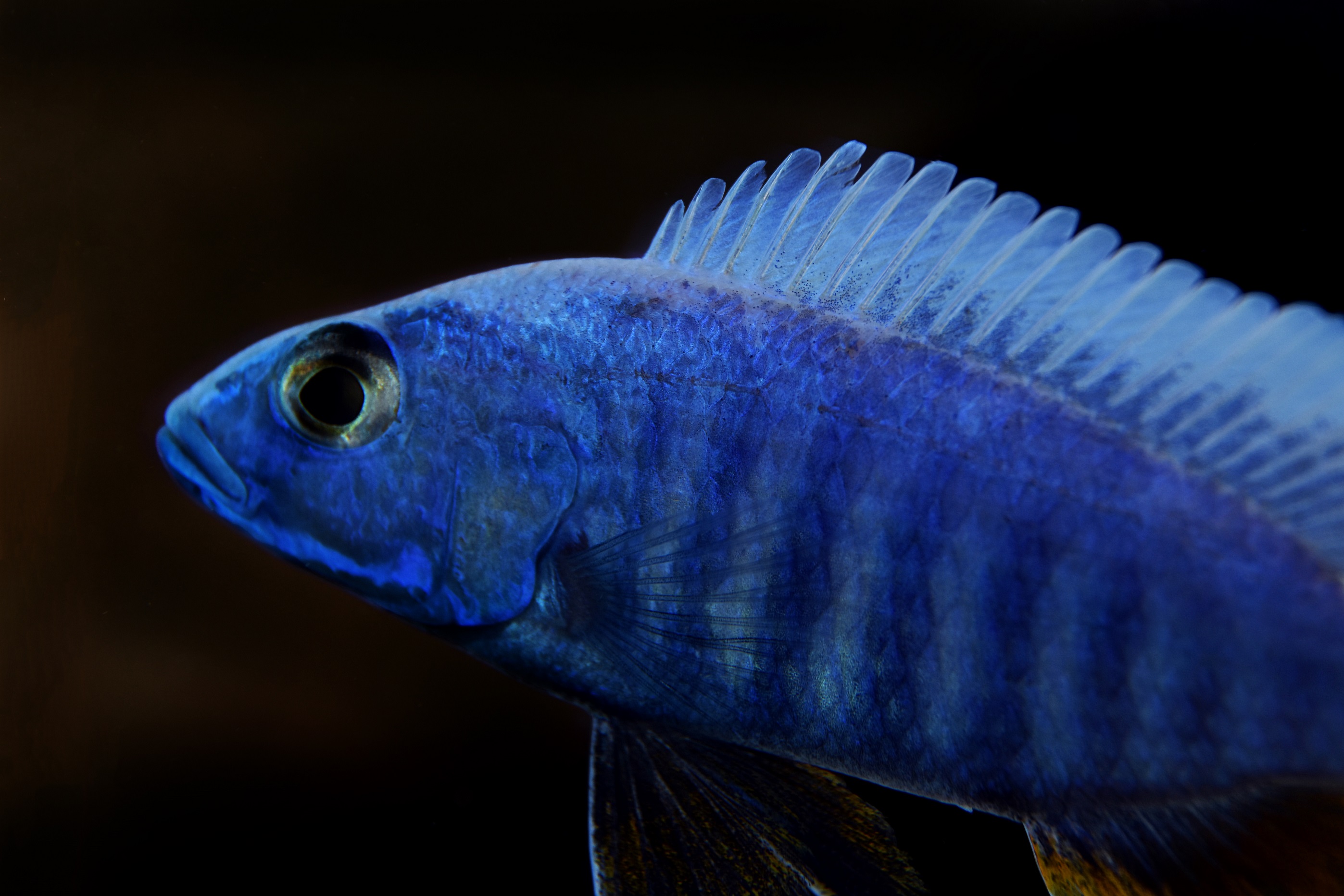Know These Fishkeeping Trends to Serve Aquatic Hobbyists
Glenn Polyn //July 1, 2021//
While the COVID pandemic saw a jump the fishkeeping hobby increase in popularity, the availability of some livestock has been iffy, at best. There’s much for retailers to know about this specialized sector of the pet care industry. Pet Age recently spoke with Jason Oneppo to learn more about what is driving the aquatic side of the pet industry. With more than 30 years of experience in the aquarium sector, Oneppo is the research and development manager for San Francisco Bay Brand.
Have there been any recent trends among aquatic hobbyists?
In recent years, the evolution of planted aquariums and the popularity of green spaces has spurred growth in the aquarium hobby. Hobbyists tend to use smaller aquariums with high-end equipment: rimless aquariums with high clarity glass, paired with a sleek-looking LED that emits the appropriate spectrum, a CO2 system and glassware, such as lily pipes (inflow and outflow for canister filters). Even the hardscape materials have evolved, the days of slate and lava rock are gone; enter the Dragon, Seiryu Stone and others. Aquarists will usually set up two or more planted aquariums because of the reasonable cost and the small footprint.
What advice do you have for retailers who want to increase their presence with fish keepers?
Start small and go fresh. Selling planted aquariums doesn’t require a lot of shelf space. Most hobbyists are setting up smaller aquariums (in the three gallon to 10 gallon range). Dedicate an endcap to them. Don’t try and stock every product out there; the important thing is to have everything available to set up the tank so that the customer can purchase a complete setup. You can even set up planted aquariums as displays and sell the entire setup.
Advancements in aquatic plant packaging allow them to be displayed on shelves. The packaging includes tubes, bags or deli cups with colorful labels and come with care instructions. Small, planted tanks are also the ideal habitat for bettas, and bettas can easily be displayed on endcaps next to plants and supplies. A non-aquatics store can benefit from offering this selection of bettas and aquascaping supplies on an endcap.
 With the popularity of e-commerce, how can brick-and-mortar retailers draw aquatic hobbyists into their store?
With the popularity of e-commerce, how can brick-and-mortar retailers draw aquatic hobbyists into their store?
Frozen fish food. The average purchase is one to three packages at a time. The cost of home delivery for frozen fish food averages $25 to $30, making it cost-prohibitive for small quantities. On average, a customer returns to a store 11 times per year to purchase frozen fish food, compared to two times per year for dry food; due to this frequency offering frozen increases opportunity for add-on sales.
Frozen foods are available as single-ingredient, aquatic organisms that are natural prey items and formulated foods; these combine aquatic organisms with plant matter, vitamins, minerals and unique species-specific ingredients, for a nutritionally complete package. There are two common forms of packaging: flat packs (resealable zipper bags) and cube packs (blister packaging). Cubes are the most popular with consumers due to their ease of use; just pop one out of the package directly into the aquarium with no thawing or rinsing required.
Once hobbyists start using frozen foods, they often want to use more than one variety. Fortunately, some packages contain multiple foods, such as San Francisco Bay Brand’s Multi-Packs, which have four varieties of food in one package and are perfect for customers with limited freezer space. For example, SFBB’s Reef Multi-Pack contains Fish Eggs, Reef Plankton, Marine Cuisine and Coral Cuisine, offering variety for an array of fish and invertebrates kept in reef aquariums.
Glassdoor freezers and spring-loaded trays increase frozen fish food sales. Several companies, including San Francisco Bay Brand, offer freezer programs that offset the cost of the freezer. Whenever possible, place the freezer towards the back of the store or at the end of an aquatic supplies aisle. This will often lead to the customer browsing the aisle and purchasing some additional items.
Don’t be afraid of change. Regularly rearrange the store, take down and set up new displays and feature new products in those displays (this is what FishTubers do on YouTube to retain viewers). If customers come in and always see the same thing, they will get bored. However, if you are always doing new things, they will stop in just to see what’s new.
Every retail store needs to have a social media presence. This doesn’t mean you have to be posting funny-faced selfies in front of fish tanks, but if that’s your thing, then do it. Go on social media, give a tour of your fish room, show live unboxings as you put away your fish orders, announce sales and special events, live broadcast seminars, etc. Most store owners have the power to do this right in their pocket.
How would you describe the ideal questions that retail employees should be asking their fishkeeping customers?
Ask how long the aquarium has been set up, the aquarium’s size, if it is freshwater or saltwater, what type of fish they have, etc. This allows you to learn more about the customers’ aquariums and offer personalized service. It is useful when selling them new fish and helps when recommending maintenance routines, equipment and additives to benefit their aquarium.
Focus on fish nutrition. It can be discussed when a customer is making a fish selection; it’s the perfect opportunity to educate them about the importance of feeding a varied diet. When you see a customer browsing the dry fish food aisle, ask them if they have ever tried frozen fish food. Many hobbyists aren’t aware that it is available. At this point, you can explain the advantages of frozen fish food in addition to their favorite dry fish food and the importance of a varied diet. Let them know that feeding frozen fish food, in addition to dry food, adds nutritional variety and will lead to long-term success.
What essential products do you recommend every retailer to stock on their shelves?
Water conditioners, foods, all in one aquatic plant fertilizers, live plants, LED lights, small CO2 systems, aquascaping supplies (substrates, wood and rocks) and a couple of good books for beginners. With all the information on the internet, it is essential to direct customers to follow one person/brand or author until they feel comfortable in the hobby. The best approach is to keep it simple.
I would also recommend stocking freshwater community flake food, betta food and treats and algae-based food, such a spirulina flakes, along with some essential marine flakes and pellets. If stores want to offer a specialized selection of foods, in addition to traditional foods varieties, for freshwater fish, they should also focus on those for cichlids, bettas, guppies and marine. Stores should also consider specialized diets for angelfish, high algae content food for tangs and planktonic foods for corals and filter feeders.
Freeze-dried foods are all-natural and the perfect treat as they add nutritional variety and act as an enrichment because they introduce different textures and flavors. They can also be used to soak up liquid vitamins, supplements or medications for easy administration.
What are the main factors currently driving fish food?
Natural, clean label, humanization and species-specific diets just to name a few. I believe we will see some new driving forces as the world goes greener over the next 30 to 50 years. I expect to see the sustainability of ingredients and environmentally friendly packaging become a focus. I also expect to see less availability of popular ingredients and single-item foods due to stricter environmental regulations; this will shape the future of the fish food industry. Some foods will simply become unavailable, and alternatives that mimic them will need to be created. Some processes used to produce fish foods may become cost-prohibitive under a green new deal. We could see a day when all the ingredients in fish foods are grown in labs and on farms or 3D printed.



















